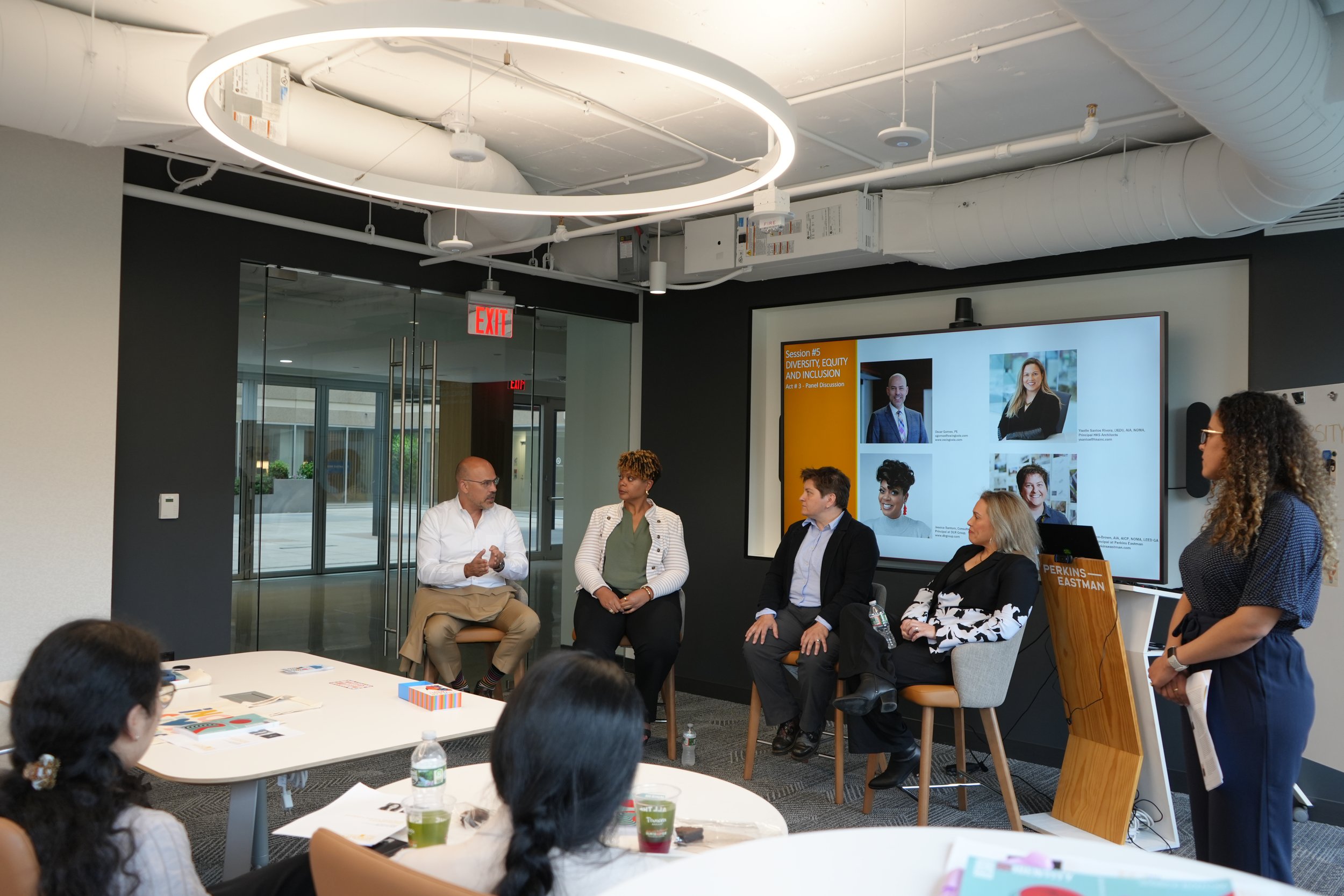S5: Diversity, Equity & Inclusion
June 14th, 2024
Location: Perkins Eastman
Led by: Diana Vaccaro, CDT & Deshona Nelson
The topic for the session was Diversity, Equity, Inclusion, and Belonging (DE&I) as it relates to the design and built environment. The session explored how to incorporate DE&I values while balancing client needs and goals with public interest and safety. Speakers helped scholars to identify actionable strategies and initiatives to attract and retain diverse talent and also examine how to create inclusive environments that foster culture, minimize bias, and address systemic inequities. Case studies were shown that showcased the inclusivity created by the implementation of Universal design principles, and a panel discussion with DE&I leaders highlighted the importance of strategies that have influenced the industry and how leadership has an important responsibility in promoting diverse representation.
Act 1: Ice Breaker Activity
Organized by the Scholars Diana Vaccaro and Deschona Nelson
The session began with an activity using the “Live Your Values” deck, a set of cards designed to help identify and align your core values. This activity prompted open conversations by highlighting the foundational values essential for diversity, equity & inclusion (DE&I) initiatives and fostering a collaborative and thoughtful beginning for the session. Each group of scholars selected the top five values on the cards they believed to be crucial for creating an environment that supports DE&I. The selected cards were visible for the remainder of the session to help guide discussions.
Shalini Agrawal & Jessica Bantom
Presentation #1 focused on actions and principles of diversity, equity, inclusion and belonging. Shalini Agrawal kicked off the presentation by leading scholars through visualizations and discussion around people’s lived experiences, to uncover biases they have experienced and implicit biases they have held. This sparked engaging conversations on how to unlearn these implicit biases and influence the built environment to be more responsive to community inequities. Jessica Bantom highlighted the importance of diverse representation in the design field and explained valuable DE&I habits and tools, and how to incorporate them into the design industry while still providing value to clients. She relayed the importance of the ability to understand, appreciate and interact with cultures, lifestyles, backgrounds, experiences different than your own.
Act 2: DE&I Principles and Actions to Lead with...
As a leader in Universal Design, Edward Steinfeld began Presentation #2 with an introduction to the Universal Design core principles and their importance in architectural practice. He discussed how several case studies incorporated these strategies and the profound impact the design had on the communities. Christian Calleri showcased the Reservoir District project along North Capitol Street NW, D.C., which is a redevelopment that includes public space, housing, retail, office and more. He emphasized how inclusivity allows more opportunities for people from different backgrounds to experience the built environment. The success of the project is largely through the inclusivity and engagement of community members through numerous group and one-on-one meetings during the design process, and ensuring all stakeholders were onboard with developing a public space meant for all.
Edward Steinfeld, AIA & Christian Calleri, AIA
Act 3: Beyond Universal Design & ISUD Certification/Studies and DE&I Principles in Urban Design Projects
The day concluded with a panel discussion featuring four firm leaders who are leading DE&I efforts in their practice. The discussion covered a wide range of topics including actionable strategies, securing full firm buy-in, initiative implementation, and how to benchmark progress. Panel members discussed different metrics for measuring success such as qualitative surveys, retention percentages, and embedding DE&I principles into firm policies.








